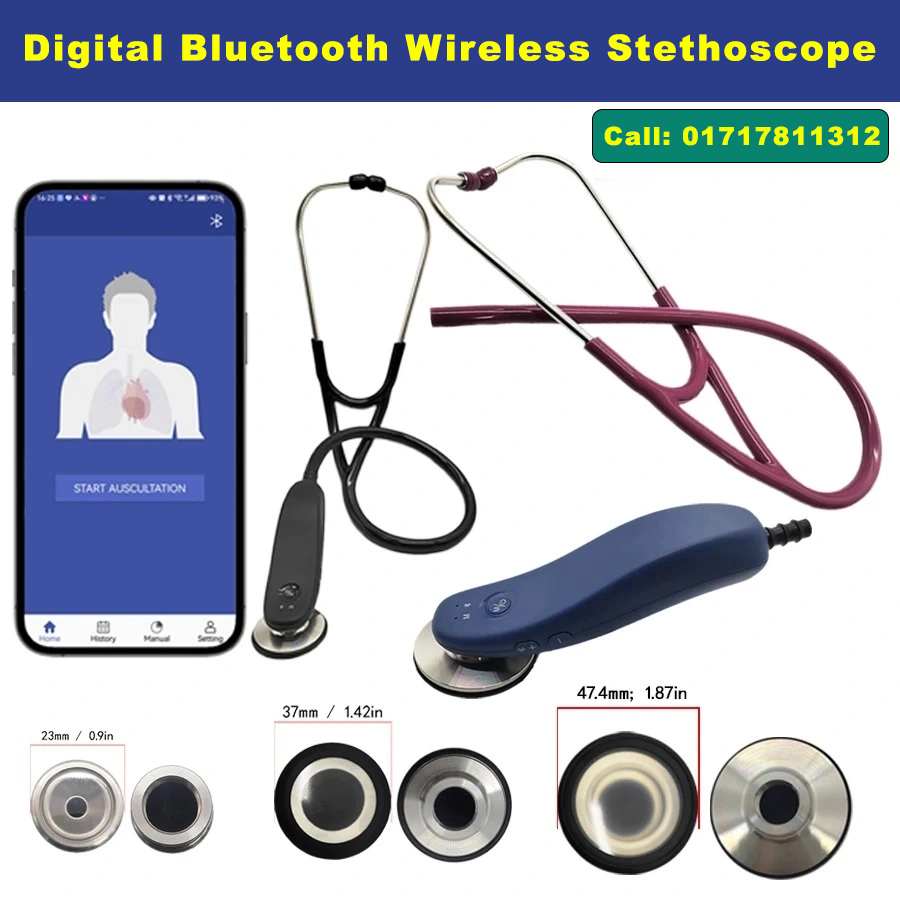🩺 Digital Stethoscope – Complete Overview
🔍 What Is a Digital Stethoscope?
A digital stethoscope is a modern upgrade to the traditional acoustic stethoscope. It converts body sounds (like heartbeats, breath sounds, bowel movements) into electronic signals. These signals can be:
-
Amplified
-
Filtered
-
Visualized on a screen
-
Recorded & stored digitally
-
Transmitted via Bluetooth or Wi-Fi
This makes them ideal for telemedicine, medical education, and precision diagnostics.
🛠️ How It Works
-
Acoustic Sensing: Like a regular stethoscope, it captures body sounds using a diaphragm.
-
Digital Conversion: Sounds are transformed into electrical signals.
-
Amplification & Filtering: The signals are enhanced and filtered to eliminate noise.
-
Output: The user hears the sound through headphones or speakers, and often sees real-time waveforms on a connected device.
💡 Key Features to Look For
| Feature | Why It Matters |
|---|---|
| Amplification | Helps detect faint sounds – some models offer up to 40x |
| Noise Reduction | Eliminates background noise for clearer auscultation |
| Recording Capability | Useful for follow-up, referrals, or teaching |
| Bluetooth or App Connectivity | For viewing soundwaves, sharing data, and EMR integration |
| Battery Life | Longer usage between charges = better convenience |
| Cloud Storage | Secures patient records and supports remote monitoring |
👩⚕️ Who Should Use a Digital Stethoscope?
-
Doctors (especially in cardiology, pulmonology, internal medicine)
-
Medical Students & Educators
-
Telehealth Practitioners
-
Nurses in Home/Field Care
-
Veterinarians
-
Paramedics in Mobile Units
✅ Pros:
-
Amplifies sounds for better accuracy
-
Great for noisy environments
-
Enables sound sharing and collaboration
-
Records and stores patient data
-
Helps in telemedicine and remote diagnostics

